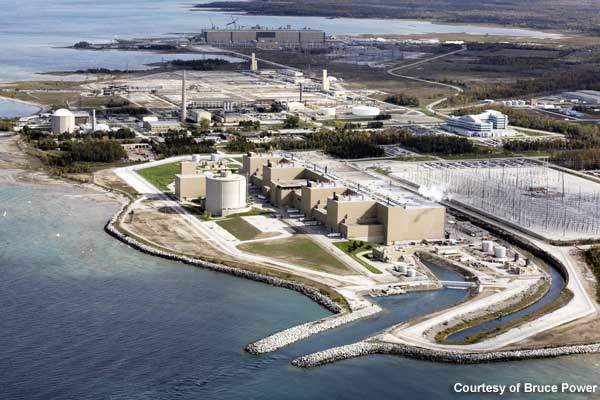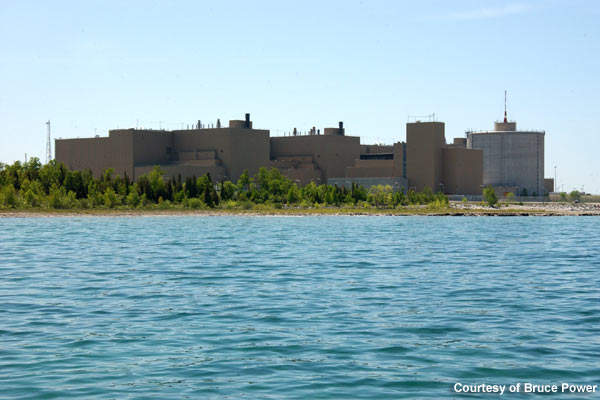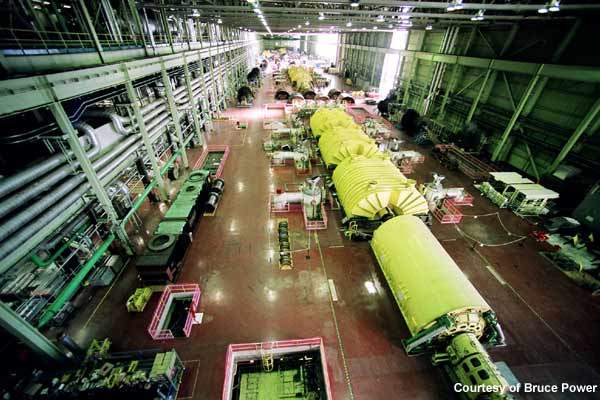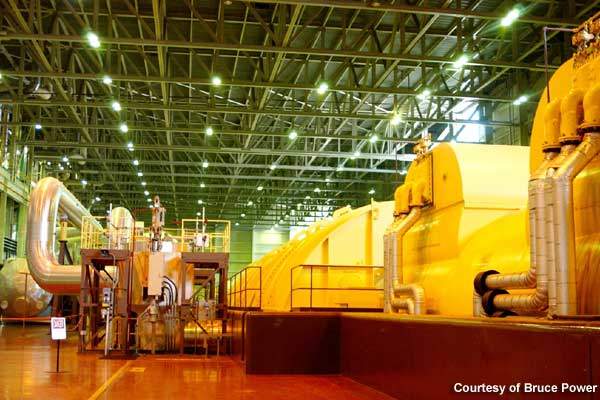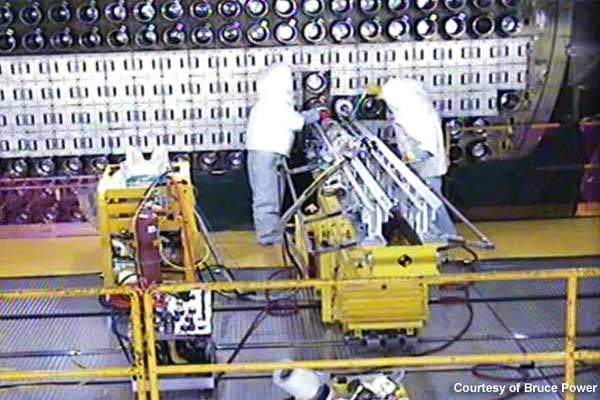Bruce Power Generating Station (BPGS) is the first private nuclear power plant in Toronto, Ontario, Canada. It is the largest nuclear power generating plant in North America and the second largest in the world, the first one being Japan-based Kashiwazaki-Kariwa. Owned by Ontario Hydro, BPGS is located on the shores of Lake Huron, 250km north-west of Toronto.
BPGS was constructed in phases between 1970 and 1987 by Ontario Hydro. It generates 20% of Ontario’s electricity, which is enough to power every fifth hospital, home and school.
Housed on a 2,300-acre site, the power plant comprises two generating stations, namely Bruce A and Bruce B. All reactors of Bruce A were temporarily laid off between 1995 and 1998 to concentrate on other resources of Ontario Hydro, while Bruce B reactors remained in service. The third and fourth units of Bruce A resumed service in January 2004 and October 2003 respectively. Units 1 and 2 are yet to restart and are currently under construction. Units 1 and 2 are expected to re-enter commercial operation in third quarter and first quarter of 2012 respectively.
When fully operational, the plant will generate around 6,232MW (net) of emission-free electricity.
Bruce Power Plant history
The plant’s construction and installation work was completed by Ontario Hydro by 1987. The first two units of Bruce A started operating in 1977 and the next two units followed in 1978 and 1979 respectively. All Bruce B reactors started operating during 1984-1987.
Later, in 1999, Ontario Hydro was divided into five divisions, including Ontario Power Generation (OPG), which operates all power generating stations in Canada.
A lease agreement to operate the Bruce station was signed between OPG and Bruce Power in 2001. The agreement made was for a lease period of 18 years, with the option to renew for another 25 years.
Bruce Power started operating the generating station in May 2001. The change in operator resulted in an increased power plant output.
BPGS Plant details
Bruce A and Bruce B of the power plant incorporate four CANDU reactors, the components of which are housed in a heavy-walled pressure vessel. The reactor comprises fissionable and moderating materials that control the reaction rate.
Out of the eight reactors, six are currently in operation and generate around 4,700MW of energy. The remaining two units from Bruce A station will generate 1,500MW of energy.
The plants integrate shielding to protect personnel, a cooling system and instrumentation for monitoring and controlling the reactor’s systems.
Bruce A restart project
Bruce Power and the Government of Ontario committed to resuming the operations of Bruce A units 1 and 2 in 2005 to meet the growing demand for power. The project was entitled, ‘Bruce A Refurbishment for Life Extension and Continued Operations Project’. Refurbishment of both the units began in 2009.
Initially, the refurbishment was expected to cost $4.25bn. This was, however, later increased to $5.25bn due to the replacement of 480 fuel channels in unit 4, which will extend its working life to 2036, in par with the three other Bruce A units. In addition, the cost to restart units 1 and 2 was increased from $400m to $700m.
A series of restorations, upgrades and enhancements are being carried out at generating station A. This also includes works to enhance safety, production and reliability for the extended life of these units.
The upgradation work includes the replacement of the pressure tube, steam generator, main condenser and feed water heater. It also includes the enhancement of electrical systems, Shutdown System 2 (SDS2) and significant other maintenance. In addition, fuel channels one and four will be replaced, and the nuclear systems, including steam generators, will be upgraded along with the refuelling of first two units.
Installation of 480 new calandria tubes in Unit 2 of Bruce A was completed by August 2010. Composed of zirconium alloy, the tubes are 6m long, and 13cm in diameter. They are placed horizontally in the reactor vessel and house fuel channel assembles. During operations, these assembles hold uranium fuel.
The loading of 5,760 fuel bundles into 480 calandria tubes of Bruce A’s Unit 2 began on June 2011 and was completed in approximately one month. Fuel loading in Unit 1 was completed in November 2011. All fuel bundles were loaded manually by the operators.
BPGS CANDU reactors
The CANada Deuterium Uranium (CANDU) is a pressurised heavy-water reactor (PHWR) invented in Canada during the 1950s-60s. The moderator used by the reactor is deuterium-oxide. Fuelled by natural uranium, CANDU’s reactors differ from other moderate reactors as the former uses heavy water for nuclear moderation.
The PHWR was developed jointly by Atomic Energy of Canada (AECL), OPG and General Electric Canada, along with several private industry participants.
Power plant technology
The power plant incorporates SmartSignal’s predictive-analytic software for optimising its performance and the maintenance of equipment. SmartSignal provides solutions for the early detection of equipment and process failures, in-house and flexible services, implementation roadmap and customer base.
The SmartSignal project is being carried out in three phases: the first phase, completed in mid 2009, included the delivery of SmartSignal’s solution, which enabled the Performance Engineering Group (PEG) to obtain trending information related to the performance of six key systems and their operating units.
The second phase involved the automatic collection and analysis of process data for providing warning trending information concerning potential equipment failure on an early basis through the PEG.. The project’s third phase includes refurbishment with the implementation of SmartSignal’s EPI Centre solution on its two nuclear units, which are scheduled to restart in 2012.
BPGS transmission and grid network
The power generated by BPGS is transmitted to major load centres and local areas. The transmission system comprises five lines of various ranges to connect Bruce area with rest of the Ontario.
Two of the five lines are 500kV and transmit power to the major load centres, Milton station and Longwood station. The remaining three double-circuit 230kV lines supply power to stations in the Kitchener, Orangeville and Owen Sound areas.
The network has the capacity to transmit around 5,000MW of power from the generating station.

